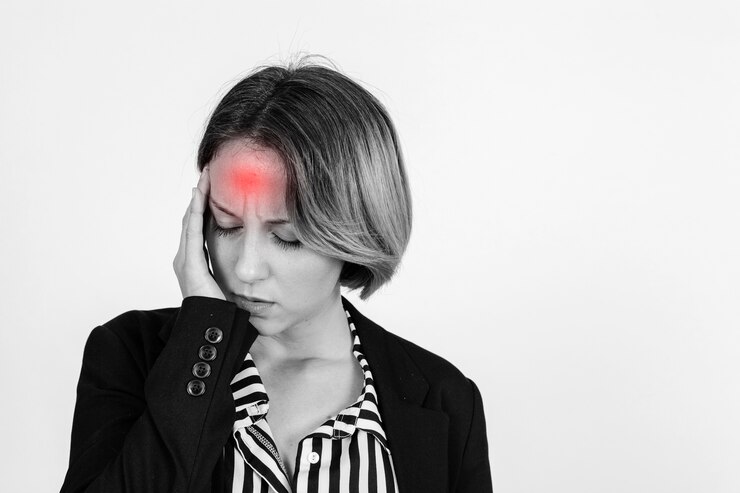Understanding Migraine: Early Signs, Triggers, and New Treatment Options

Migraines are far more than simple headaches. Characterized by pulsating, often debilitating pain, accompanied by sensory disturbances like nausea, light sensitivity, and visual aura, migraines affect approximately 15% of the global population migraine.co.nz+6pmc.ncbi.nlm.nih.gov+6en.wikipedia.org+6. While each person’s experience may differ, understanding migraine symptoms—from early warning signs to full-blown episodes—is key to timely management and relief.
Early Signs & Warning Symptoms
Before the severity of a migraine sets in, some individuals experience prodromal symptoms—subtle cues that a migraine may be approaching. These can include:
- Unusual food cravings or aversions
- Mood shifts, such as irritability or euphoria
- Neck stiffness and fatigue
- Sensory sensitivity (light, sound, smell)
- Difficulty concentrating or mild cognitive fog
These early intrusions may appear hours or even days before the headache itself, offering a valuable window to act proactively.
The Role of Triggers
Migraines are often triggered by internal or external stimuli. Common migraine triggers include:
- Hormonal changes (especially in women)
–Based on factors like menstrual cycles, contraceptives, or menopause thescottishsun.co.uk+7en.wikipedia.org+7en.wikipedia.org+7 - Stress—both emotional and physical
- Insufficient or excessive sleep
- Dietary triggers: alcohol (especially red wine), caffeine withdrawal, aged cheeses
- Environmental influences: bright lights, strong smells, flickering or flashing visuals self.com
- Weather and barometric changes
- Certain foods (e.g., MSG, processed meats, artificial sweeteners)
Though the strength of these associations varies, most migraineurs report at least one identifiable trigger en.wikipedia.org+10en.wikipedia.org+10migraine.co.nz+10. By using headache diaries and careful tracking, many can reduce frequency and severity.
The Attack: Classic Migraine Symptoms
Once a migraine starts, common symptoms include:
- Throbbing or pulsating head pain—usually on one side
- Intense light (photophobia) and sound (phonophobia) sensitivity
- Nausea or vomiting
- Aura: visual disturbances like flashes, zigzag lines, or blind spots (experienced by ~⅓ of migraine sufferers) glamour.com
- Cognitive slowing, difficulty speaking
- In severe cases, sensory or motor impairment (e.g., in hemiplegic migraines)
Duration varies from a few hours to several days. Afterward, some individuals experience a “migraine hangover,” marked by fatigue, mood changes, or scalp tenderness.
Prevention & Acute Treatment Strategies
Managing migraines effectively requires a dual focus:
- Acute treatment to halt ongoing attacks
- Preventive strategies to reduce future frequency
Acute therapies:
- Over-the-counter NSAIDs or acetaminophen
- Prescription triptans, ditans, or gepants
- Anti-nausea meds
Preventive options:
- Daily oral medications: beta-blockers, anticonvulsants, certain antidepressants migraine.co.nz+4en.wikipedia.org+4glamour.com+4migrainecanada.org+15en.wikipedia.org+15glamour.com+15en.wikipedia.org+1glamour.com+1glamour.com+1thesun.ie+1
- CGRP monoclonal antibodies & gepants (e.g., galcanezumab, atogepant) pmc.ncbi.nlm.nih.gov+4en.wikipedia.org+4thesun.ie+4
- Botox injections for chronic migraine (15+ headache days/month) verywellhealth.com+3cedars-sinai.org+3medstarhealth.org+3
- Non-pharmacological aids: stress management, sleep hygiene, hydration, avoidance of triggers
Botox® for Migraines: A New Standard
One of the most significant advancements in chronic migraine management has been the introduction of Botox® for migraines.
How It Works
Botox (onabotulinumtoxinA) is injected into specific sites around the head, neck, and shoulders—typically 31 injection points—administered every 12 weeks newsnetwork.mayoclinic.org+3migraine.co.nz+3migraine.co.nz+3verywellhealth.com. It blocks nerve signals, calming muscle contractions and interrupting pain transmission pathways .
Clinical Evidence
- Mayo Clinic data show benefits lasting ~10–12 weeks, with injections spaced every three months due to potential antibody formation nyulangone.org+1uclahealth.org+1.
- The PREEMPT clinical trials confirmed that Botox reduces migraines in chronic sufferers, showing improved frequency, intensity, medication use, and quality-of-life timesofindia.indiatimes.com+14pmc.ncbi.nlm.nih.gov+14self.com+14.
- Studies indicate Botox is cost-effective and well tolerated, with mild side effects such as injection site pain, transient neck weakness, or localized bruising .
- Approximately 50% of patients report meaningful relief; some experience a wearing-off phenomenon before the next cycle migrainecanada.org.
Safety & Considerations
Side effects are generally mild—temporary weakness, drooping eyelid, or neck stiffness . Rare systemic effects can occur if the toxin spreads, but this is uncommon hopkinsmedicine.org.
Cost and coverage can be issues: in the U.S., insurance typically requires prior preventive medication trials; out-of-pocket Botox can run ~$1,000 every three months . In New Zealand, MedSafe has approved the ALLOR Clinic for local Botox-based chronic migraine treatment migraine.co.nz.
Cutting-Edge Options Beyond Botox
While Botox remains a strong option for chronic migraine, newer treatments are emerging:
- CGRP-targeted therapies
- Monoclonal antibodies like erenumab, fremanezumab, eptinezumab, and galcanezumab block the CGRP pathway en.wikipedia.org+1en.wikipedia.org+1.
- Oral CGRP antagonists such as atogepant (Qulipta/Aquipta) offer migraine prevention via tablets, with NICE recommending them for both episodic and chronic migraine en.wikipedia.org+1thesun.ie+1.
- Emerging medications
- GLP-1 agonists (e.g., semaglutide, liraglutide/Ozempic) show early promise in reducing migraine frequency timesofindia.indiatimes.com.
- Botulinum variants like Dysport are undergoing Phase III trials (E‑BEYOND, C‑BEOND) for episodic and chronic migraine medstarhealth.org+1migraine.co.nz+1.
- Interventional and surgical approaches
- Techniques like nerve blocks, peripheral nerve stimulation, or migraine-trigger nerve surgery are explored in refractory cases .
Integrating Treatment & Lifestyle
An ideal migraine prevention plan blends strategies:
- Medical management: personalized based on frequency, severity, side effects, and comorbidities
- Lifestyle modifications: consistent sleep, stress control, trigger avoidance, hydration
- Behavioral therapies: biofeedback, CBT, mindfulness
- Support resources: trusted information and communities such as those on https://www.migraine.co.nz/wikipedia.org+14glamour.com+14en.wikipedia.org+14migraine.co.nz+1migraine.co.nz+1
When to Seek Specialist Care
Consult a neurologist or headache specialist if:
- You’re experiencing 15+ headache days per month or several frequent disabling attacks
- Over-the-counter medications or first-line preventives fail
- You have atypical or complex symptoms (e.g., aura, neurological deficits, hemiplegic migraines)
- You want to explore advanced treatments like Botox or CGRP therapies
Conclusion
A combined strategy of early recognition of migraine symptoms, consistent lifestyle changes, and modern therapeutic approaches—including Botox® for migraines—offers renewed hope for those burdened by chronic headaches.
To learn more, explore trusted resources and options local to you on https://www.migraine.co.nz/. Understanding your own migraine pattern empowers proactive care—improving quality of life and reducing the hold these episodes can take.